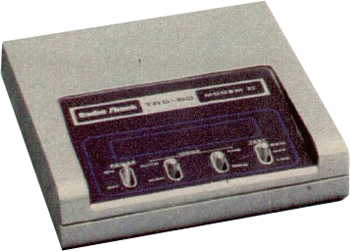The sun is about to set on the dial-up modem, once the most common way to access the Internet. According to Pew Research, fewer than 3 percent of Internet users have a dial-up modem. An era has passed.
Oh, I remember my first modem, shown in Figure 1 and written about in this post from 2009. I used that modem in 1984. It ran at 300 baud. Speed-wise that meant that text appeared on the screen about as fast as you could type it. In other words: S-L-O-W-L-Y.

My very first modem.
That slow modem speed was okay, considering how new digital communications was, that the technology used standard phone lines, and also that text was about all you transmitted from one computer to another. Sure, you could download programs, but the programs were small back then. You didn’t mind waiting three hours to download a 200K program file.
I skipped the 1200 BPS revolution and purchased a new 2400 BPS modem. Then I was one of the first kids on the block to get a 9600 BPS modem. They just burned up the phone lines.
BPS = Bits Per Second, the modem’s speed. Broadband speed is measured in the millions of BPS.
From 9600 BPS the online world moved to the 14.4 KBPS modems. They were popular for a long time, but eventually supplanted by 28.8 KBPS modems.
The pinnacle of dial-up technology was the 56 KBPS modem, which was about as fast as standard phone lines could handle. I used 56K modems in my old office 14 years ago. That’s because faster service wasn’t available out in the sticks where I lived.
Yet over the past several years, the migration to high-speed, broadband, on-all-the-time Internet has pretty much been successful. Even in remote areas, mobile data signals are now available. You can latch on to a 4G LTE signal in your cabin in the woods, which is what most people do.
I assume the 3 percent still using dial-up just don’t have other options, or perhaps they don’t like change. As the world moves away from landline phones, I expect that number to drop further.
For my career, this new data means that the next release of my books — specifically Laptops For Dummies and PCs For Dummies — won’t cover dial-up Internet access. That’s pretty much the way it goes. I don’t cover monochrome PC monitors or floppy disks any more either.
Technology moves forward!


I had dial up (56K at home) for years changed over to broad band a few years back. Recently I dug out the old USB 56K modem for use on my Windows 2000 machine the dial up service I used had vanished. The thing I think there should be some means & reference of how to get on to stop those in charge flicking the off switch to DSL/ADSL lines.
Syria for example…
Comment by glennp — October 14, 2014 @ 4:03 am
Modem technology is still valid on plain old phone lines. You can use it to dial into another modem, but it’s only a two-computer setup. (Well, unless the other computer multiplexes.) That’s the less efficient model we used back in the early 1980s with the Bulletin Board Systems. While the dial-up ISPs are vanishing, I bet there still are some dial-up BBSs out there. Not a lot, but some. I don’t believe that the phone company could disable this technology as long as landlines exist.
Comment by admin — October 14, 2014 @ 7:19 am
“While the dial-up ISPs are vanishing, I bet there still are some dial-up BBSs out there.”
You’re right, there’s still a few out there in North America; 29 to be exact. I even dial into them on occasion… Here’s the list: http://www.telnetbbsguide.com/dialbbs/dialbbs.htm
Comment by linuxlove — October 15, 2014 @ 10:03 am
29? That’s it?
I suppose with the POTS (Plain Old Telephone System) going away, that number ain’t getting any bigger.
Comment by admin — October 15, 2014 @ 10:11 am
So I just looked on my laptop to see whether or not it still had a modem. It does. Problem: I don’t have a POTS any more! So I can’t even test those systems! 🙁
Comment by admin — October 15, 2014 @ 10:14 am